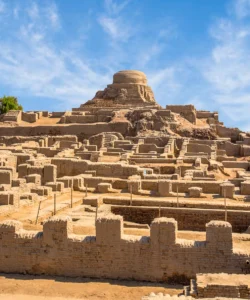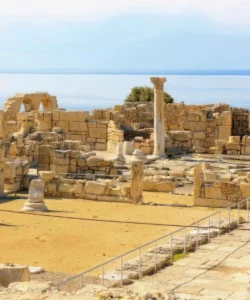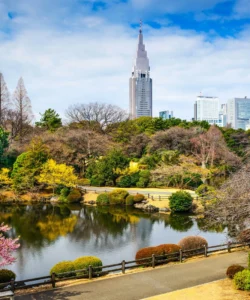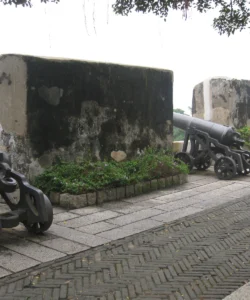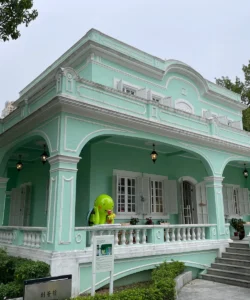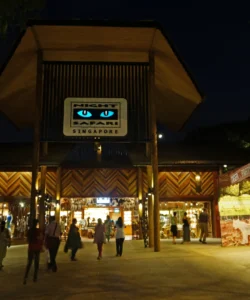Anping Old Fort, originally known as Fort Zeelandia, stands as a pivotal historical landmark in Tainan, Taiwan. Built by the Dutch East India Company (VOC) in the 17th century, it was Taiwan’s first major defensive stronghold and a bustling hub for trade. Despite numerous transformations, destructions, and reconstructions over nearly four centuries, Anping Old Fort remains a powerful symbol of Taiwan’s complex colonial past, having witnessed the arrival of Europeans, the establishment of Chinese rule, and subsequent periods of Japanese and Republic of China governance.
Listen to an introduction about Anping Old Fort
![]()
Name: Anping Old Fort (安平古堡, Ānpíng Gǔbǎo). Also known historically as Fort Zeelandia, Fort Orange, Fort Anping, and Taiwan City.
Address: No. 82, Guosheng Road, Anping District, Tainan City, Taiwan (R.O.C.). It is located in the historic Anping District, which is a major tourist area.
How to get there:
Anping Old Fort is easily accessible from Tainan’s city center:
- From Tainan Station (TRA – Taiwan Railways Administration):
- By Bus: Take Tainan City Bus No. 2, 88, 99 (Taiwan Tourist Shuttle – Anping Taijiang Route) or Fucheng Taijiang Route 98 to the “Anping Old Fort” (安平古堡) stop. The journey typically takes 20-40 minutes, depending on the route and traffic.
- By Taxi: A taxi ride from Tainan Station to Anping Old Fort is quick, usually around 15-20 minutes.
- From Tainan HSR (High-Speed Rail) Station: Take a taxi or connect to Tainan TRA Station via the local train, then follow the directions above.
- By Car/Scooter: Drive to Anping District and follow signs to Anping Old Fort. Parking facilities are available nearby.
Landscape and Architecture:
Anping Old Fort’s architecture reflects its turbulent history, showing remnants of its original Dutch construction alongside later additions and extensive reconstruction:
- Original Dutch Fort (Fort Zeelandia) Remnants: The most authentic surviving elements are sections of the original red-brick outer walls (particularly the southern brick wall), built with bricks brought from Java and a unique mortar mixture of sugar, sand, ground seashells, and glutinous rice. These walls often have the tangled roots of banyan trees growing over them, visually narrating centuries of history.
- Inner Fort Structure (Reconstructed): The original inner fort was a square, three-layer construction. While much of it was destroyed and its bricks repurposed over time, the current “Anping Old Fort” structure (rebuilt largely after the Japanese Colonial Period and again in 1975) features an observation tower with a pointed roof that aims to evoke a fortress-like appearance, though it’s largely a modern reconstruction on the original foundations.
- Observation Tower: The prominent white-painted observation tower on the site (added in 1975) provides panoramic views of the Anping District and the Taiwan Strait, serving as a landmark.
- Koxinga Statue: A statue of Koxinga (Zheng Chenggong), the Ming Dynasty loyalist who expelled the Dutch in 1662, stands prominently within the fort grounds, commemorating his pivotal role in Taiwanese history.
- Cannons and Artifacts: Replicas of 17th-century cannons are displayed, alongside exhibition rooms within the fort that showcase artifacts, documents, and multimedia presentations detailing Anping’s history from indigenous beginnings through Dutch occupation, Koxinga’s rule, the Qing Dynasty, and the Japanese colonial period.
- Surrounding Historical Area: The fort is part of the larger Anping Harbor National Historical Park and is surrounded by Anping Old Street, Tait & Co. Merchant House, and Anping Tree House, which collectively form a rich historical district.
What makes it famous:
Anping Old Fort is famous for:
- Taiwan’s First Major Fort and Gateway to History: It marks the beginning of recorded Taiwanese history with European settlement (Dutch in 1624), making it a site of immense historical significance as the administrative and trade hub of Dutch Formosa.
- Site of Koxinga’s Victory: It is famously the site where Koxinga besieged and ultimately defeated the Dutch in 1662, ending Dutch rule and establishing the first Chinese government in Taiwan. This event is a foundational moment in Taiwanese national identity.
- Symbol of Colonial Past: It embodies the complex layers of Taiwan’s colonial history, having been under Dutch, Chinese (Koxinga, Qing), and Japanese rule, serving as a witness to centuries of power shifts.
- Remnants of Original Dutch Construction: Despite extensive changes, the surviving original brick walls provide a tangible link to its 17th-century origins, making it a rare authentic artifact of that period in Taiwan.
- Museum and Educational Site: It now functions as a museum, offering well-maintained exhibits that explain Taiwan’s early international connections and its development as a trading hub.
Differences from some other wonders:
Anping Old Fort distinguishes itself from other historical forts and landmarks in several key ways:
- Pivotal Starting Point of Taiwanese History: While many forts are significant, Anping Old Fort’s status as the first major European-built fort on Taiwan and the very beginning of its well-documented written history is unique to the island. It’s the literal foundation upon which much of modern Taiwan’s historical narrative is built.
- Witness to Early East-West Encounters: It stands as a prime example of a site that facilitated early and sustained encounters between European powers (Dutch) and East Asian cultures (Chinese, indigenous), primarily through trade, unlike more purely defensive forts or purely commercial ports.
- Extreme Cycles of Destruction and Reconstruction: While many forts face damage, Anping Old Fort has undergone multiple, near-total destructions and subsequent re-interpretations/reconstructions, including the Japanese demolishing remnants for new buildings and the KMT’s tourist-focused rebuild in 1975. This repeated cycle of erasure and re-creation makes its remnants all the more poignant and its current form a complex palimpsest of history, unlike more continuously preserved or single-period forts (e.g., Fortaleza do Monte’s more faithful restoration blueprint).
- Unique Local Mortar Composition: The use of glutinous rice, sugar, sand, and oyster shells in the original Dutch mortar is a specific, unique construction detail that highlights the adaptive engineering of the time and the use of local materials.
- Integration with a Vibrant “Old Street” District: The fort is seamlessly connected to Anping Old Street, a bustling tourist area filled with traditional snacks, handicrafts, and other historical sites, offering a comprehensive historical and cultural experience beyond just the fort itself.
In essence, Anping Old Fort is more than just a fortress; it is a profound historical palimpsest, a gateway to Taiwan’s rich and complex colonial past, and a living testament to the pivotal role it played in early East-West interactions.

